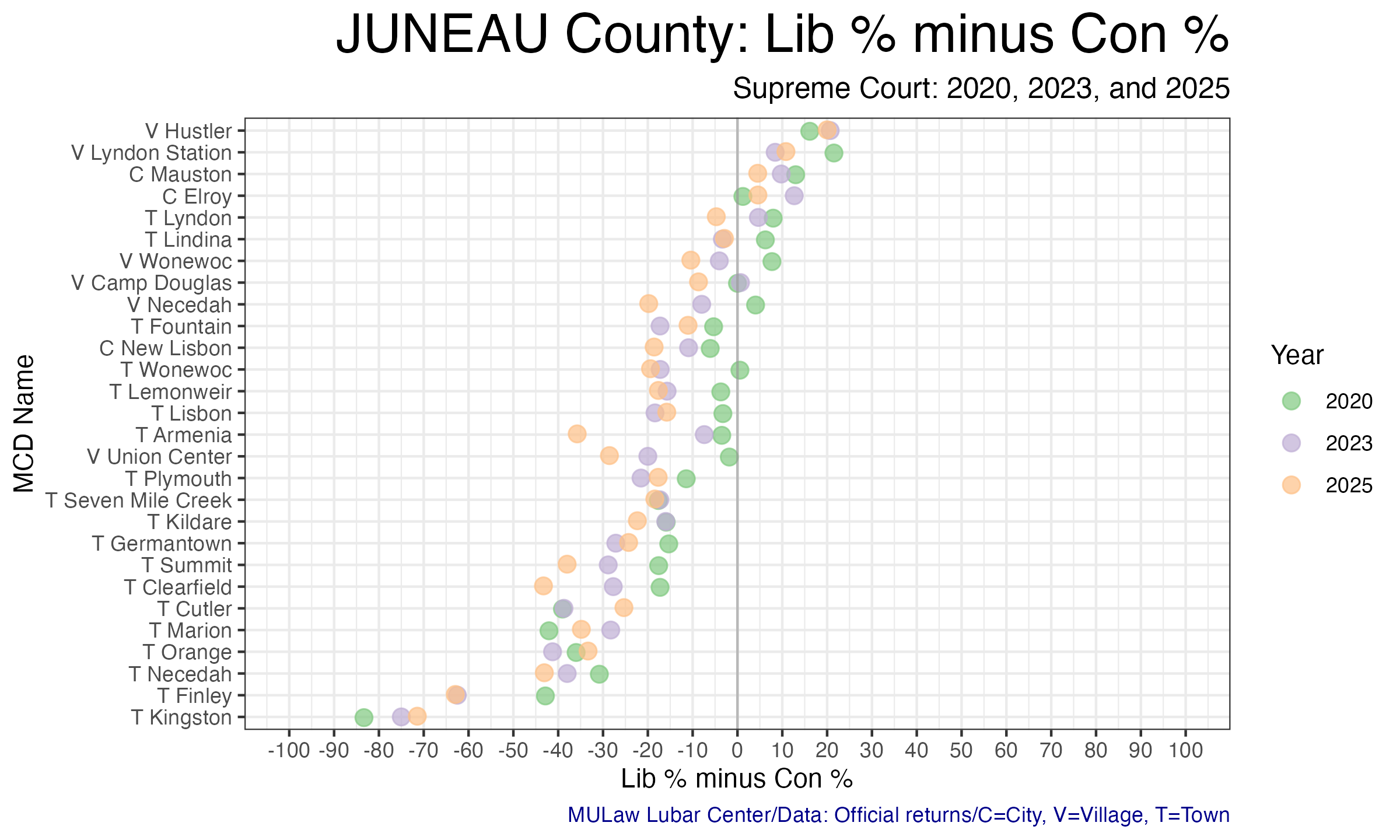
31 Juneau
Juneau County (pop. 27,000) lies to the northwest of Dane County, generally beyond the economic pull of the state capitol. It is 88% white, with a lower median income than the state average and a higher poverty rate. More than half of residents have a high school degree or less. Politically, the county was closely divided between Democrats and Republicans during the 2000s, but it has shifted toward the Republican Party beginning around 2010. Remarkably, the Libertarian candidate Ed Thompson won a plurality of the county in his 2002 campaign for governor.
31.1 Demographics

31.2 County Election Results

Click each column name to sort its values.
31.3 Municipality Election Results
The county seat, Mauston City, is the largest municipality in the county. Several other small cities and villages punctuate the rural towns covering the county. The City of Elroy is a popular bicycling destination and the eastern terminus of the first rails-to-trails conversion in the country (the Elroy-Sparta State Trail). All Juneau County municipalities voted for Donald Trump in 2016, 2020, and 2024.
This map shows the location of each municipality in the county, as it existed in 2022.

These dot plots show the most recent election results in each municipality.



To more clearly illustrate recent changes in municipality voting trends, these scatterplots compare the most recent vote for president and senator with the shift from that office’s previous election.


These maps show show every election result since 2000 in each municipality.



Click each column name to sort its values.
31.4 Supreme Court Election Results
Wisconsin’s Supreme Court has 7 justices, each of whom are elected to 10 year terms in statewide elections held in April. State law prohibits more than one Supreme Court election from being held in a single year. If a seat becomes vacant, the governor appoints a replacement who serves until the next year in which no court election is already scheduled. If more than two candidates achieve ballot access, a nonpartisan, top-two primary is held in February.
Court elections are formally nonpartisan, but candidates are usually supported by either liberals or conservatives. In recent years, it has become common for the Democratic and Republican parties to endorse and actively campaign on behalf of favored judicial candidates. The liberal and conservative labels indicated in the following graphs and tables are based on widely recognized tendencies, not any formal affiliation.
31.4.1 County Election Results
This graphic compares how presidential, gubernatorial, and court elections have trended over the past quarter century. Click the “Table” tab to see detailed results for the Supreme Court races.

31.4.2 Municipality Election Results
The following table shows the results of each Supreme Court election by municipality. The graphic visualizes the shifts over the past three court elections.
